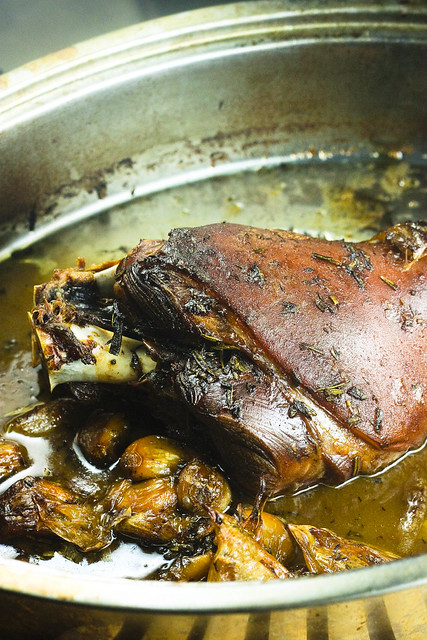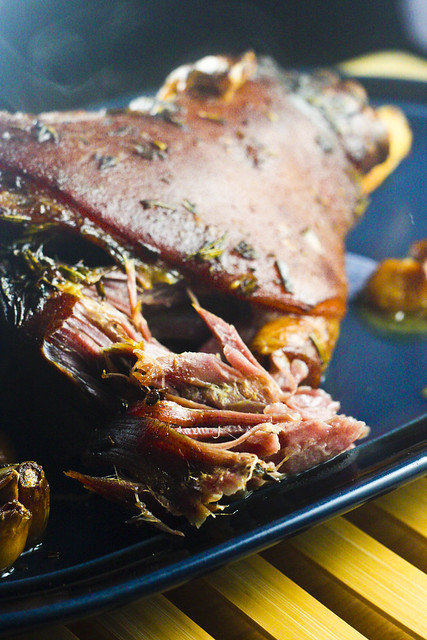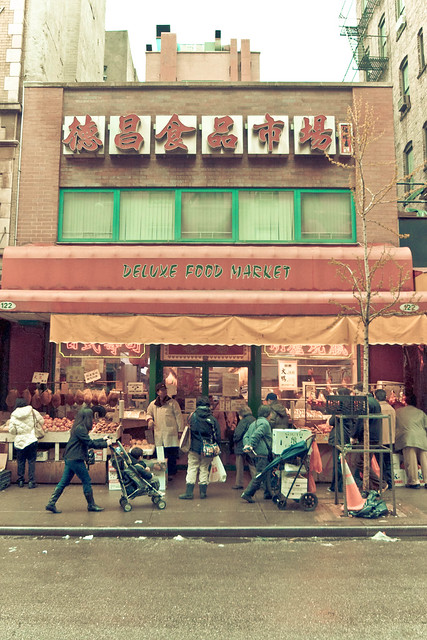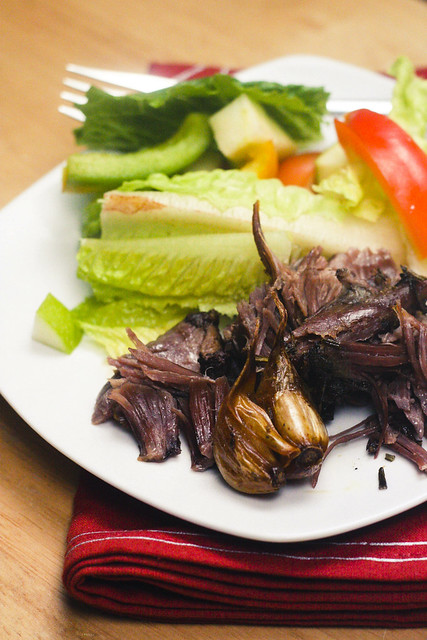The Seven-Hour Leg of Goat
Sometimes I think Americans can be a bit...behind. I mean, we have almost no interest in soccer, which it seems the rest of the world finds to be the single best sport ever. Our fashion sense can be a little unique, and I've heard that our cell phones are children's toys compared to what some other countries have. And we don't really eat all that much goat. Which, it turns out, is the most widely eaten meat on the planet. It's time to catch up. So when I was asked if I'd like to review the latest book from Bruce Weinstein and Mark Scarbrough (let's not forget that last year the couple gave us what I am sure is the only Easter ham I will ever need), I think my answer was obvious. So let's talk goat meat.
Although goat cheese, as the pair says, has morphed from a "gag-me no-no in the Mad Men sixties to the full-on cliché it is today," goat's meat is not so easily found. It may be the world's primary meat, with almost 70 percent of the red meat eaten on this planet coming from from those bearded little creatures, but you'd never know it in the US. Weinstein and Scarbrough urge us to consider India, Thailand, China, Bali, Nigeria, Kenya, Jordan, Saudi Arabia, Israel, * takes deep breath in* Mexico, Costa Rica, Barbados, and Brazil. The pair also point out that goat has largely escaped the kinds of mass production that is ruining other sources of meat (see Mark Bittman, Michael Pollan and Eric Schlosser on this point). And, as if this animal weren't magical enough (cue Simpson's clip), it has fewer calories, less fat (both normal and saturated) and less cholesterol than chicken, beef, pork or lamb (all of this according to the book).
Okay, so now that we're convinced about at least giving goat meat a shot, there's the problem of finding it. Even in NYC, this isn't as easy as a trip to the local supermarket. Weinstein and Scarbrough provide a list of sources in the book, many of which offer mail order, and one of which is even located in Brooklyn. But I was getting a little antsy and didn't want to wait around for the mail, especially because I don't have a doorman and didn't want to risk goat-theft. So Chinatown it was. And on the recommendation of someone who really knows where to shop in Chinatown, I found my leg of goat at a market called Deluxe Food Market, which is on Mott Street between Hester and Grand.
So armed with a goat-leg, I picked The Seven-Hour Leg because it sounded obsessive, which is kind of what this project is all about. It's a French technique call gigot de sept heures and although Weinstein and Scarbrough claim that only French grandmothers have the kind of time necessary to sit around basting a goat leg for seven hours, it turns out that American grad students do too.
The Seven-Hour Leg
Excerpted (with Permission) from Bruce Weinstein and Mark Scarbrough's Goat: Meat, Milk, Cheese, 2011, Stewart, Tabori & Chang
3 tablespoons olive oil
One 4-pound (1.8 g) leg of goat
2 whole garlic heads, the cloves not peeled but broken up from the bulb and the core/stem discarded
1 tablespoon minced fresh rosemary leaves
1 tablespoons minced fresh sage leaves
1 tablespoons fresh thyme leaves
4 bay leaves
2 cups (480 ml) dry white whine or dry vermouth
2 cups (480 ml) reduced-sodium chicken broth
1 tablespoon goat butter, optional
1. Get the rack set in the center of the oven and warm the oven up to 300F (150C)
2. Set a large, serious, flame-safe, no-holds-barred roasting pan over medium-high heat on top of the stove. Let that pan get good and hot, then swirl in the oil. Add the leg and brown it all over, holding it up so that even its narrow, thin sides sear against the hot pan. One warning: You'll splatter everything. Plan ahead and have children to clean up the mess. (Thus, you may need to start the recipe years earlier. Call it the fourteen-year leg.)
3. Transfer the leg to a carving board, drop the heat under the pan to medium, and toss in the garlic and all the herbs. Stir them around for a few seconds. then pour in the wine and broth. Whoosh! Scrape up any browned bits in the roasting pan as the liquid boils.
4. Set the leg back in the pan. A goat leg is not rounded; instead, it has two meaty sides. You'll want to roast it with the meatier side facing up. Cover the pan tightly with aluminum foil. Place it in the oven and bake for 3 1/2 hours, basting occasionally. This is a tricky bit: uncovering, basting, re-covering. It's probably why this dish is such a classic: Only French grandmothers have this much time on their hands. Of course, they do because of their 35-hour work weeks and universal health care and state-backed pensions and...Sorry. Just make sure the foil is sealed tight after each basting.
5. Uncover the roasting pan and drop the oven's temperature to 275F (135C). Continue roasting for 3 1/2 more hours, basting occasionally, making sure that the leg stays moist. Baste more now than you did before, because the thing is uncovered. At the end of it all, that leg will almost be confit: tender, meltingly sweet, crazy-delicious, and perfect. Transfer the leg back to the carving board. The task of carving this thing isn't that big a deal, since it will basically fall apart into chunks and pieces. You can slice these down into more manageable bits.
6. Finally, if you like, swirl the butter into the very small amount of pan juices left in the hot pan, to make a simple sauce. Bruce things this excessive. (Cooking a goat leg for 7 hours isn't?) I think of butter as a beverage. In any event, remove the bay leaves before serving the sauce.




Comments
Great post, thanks.